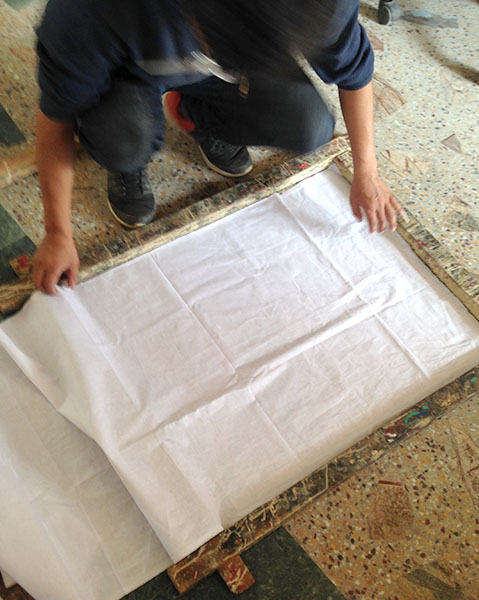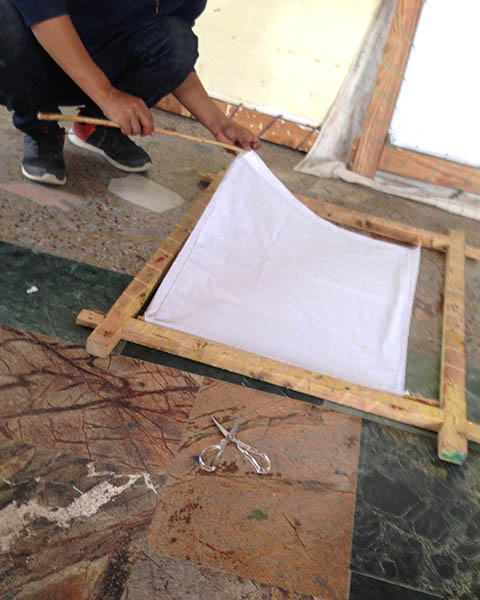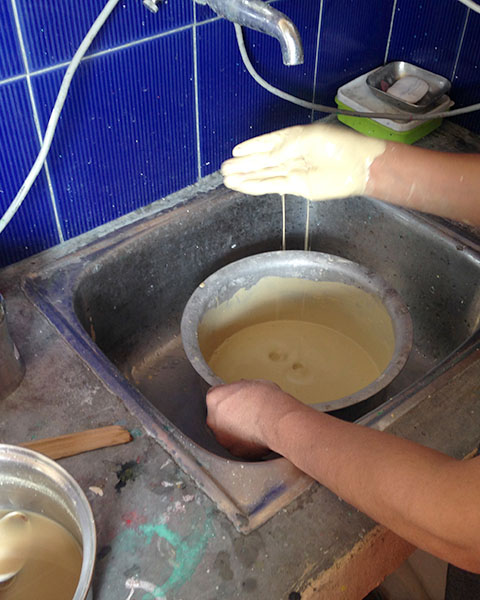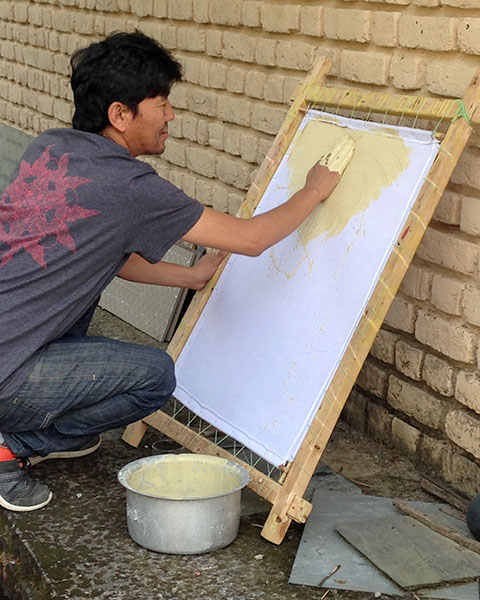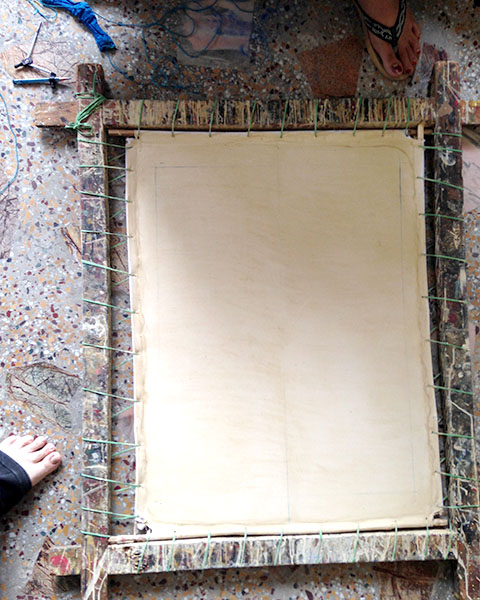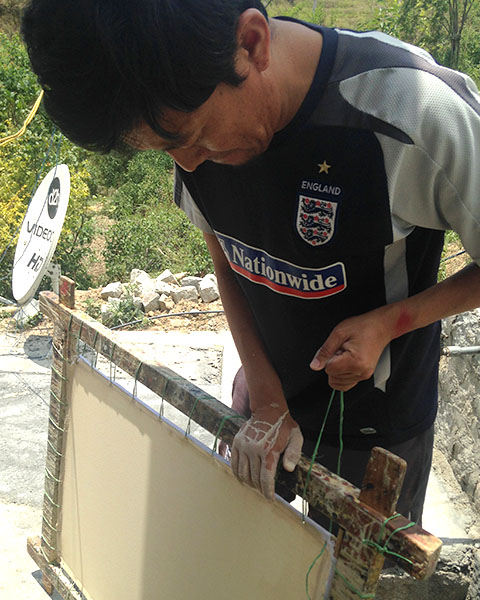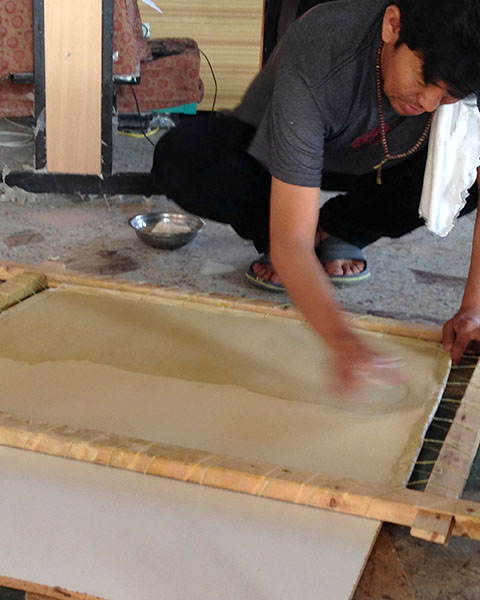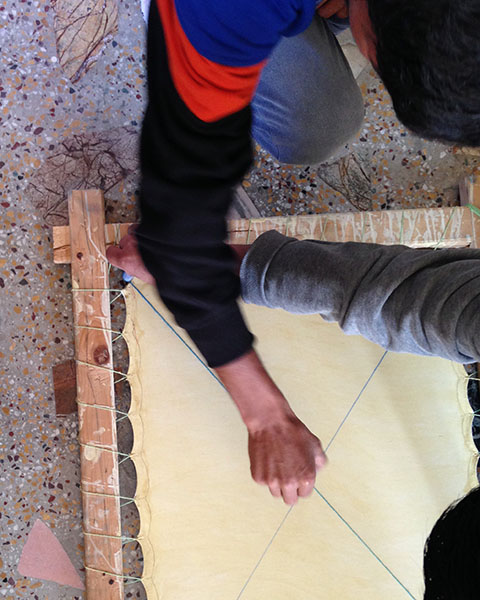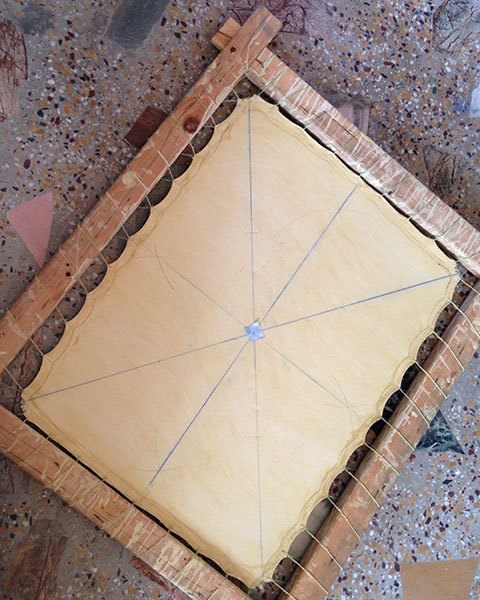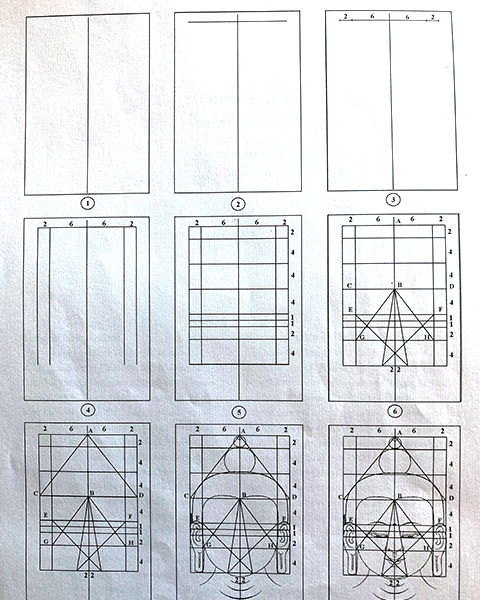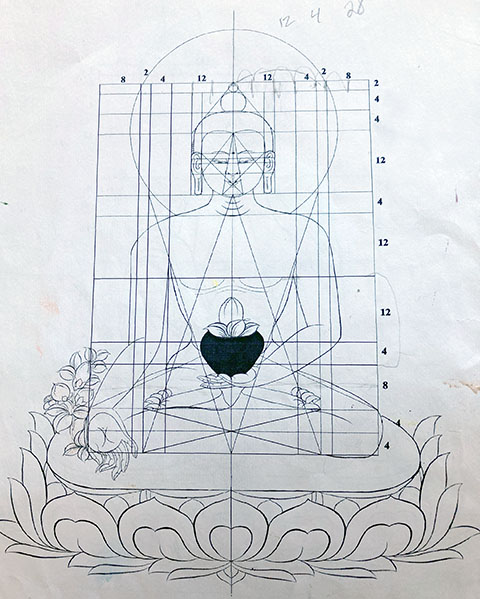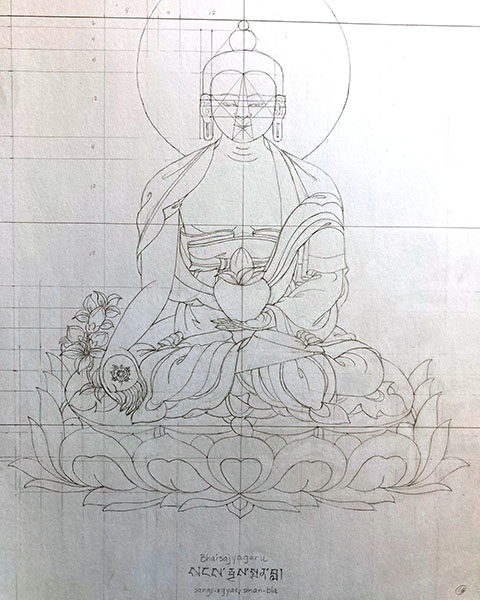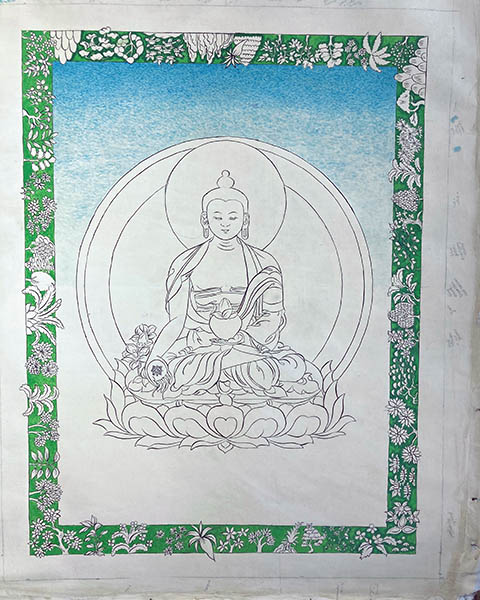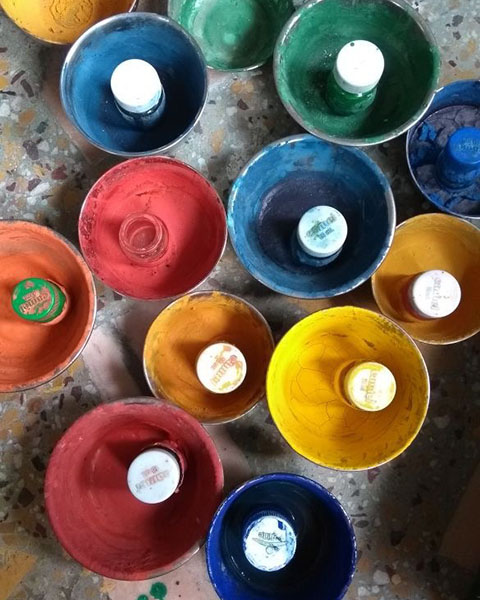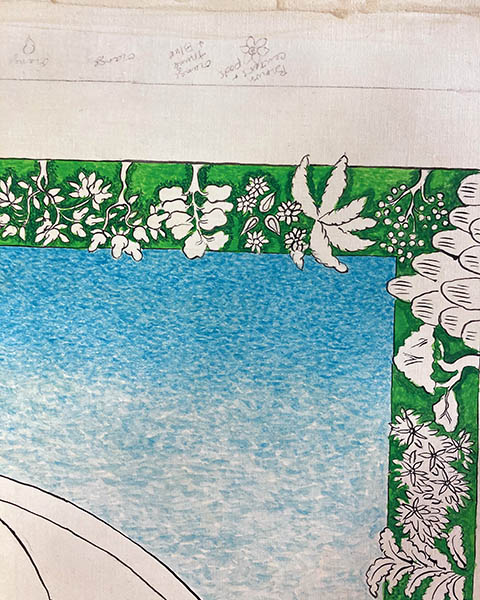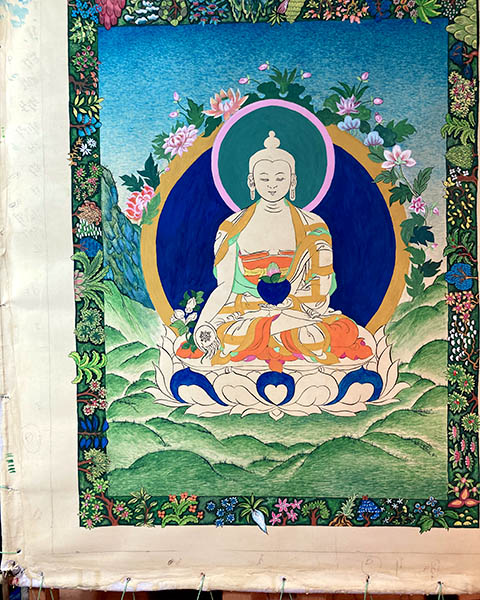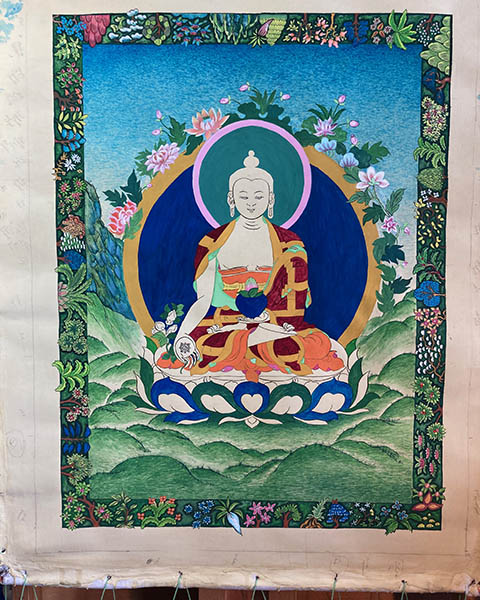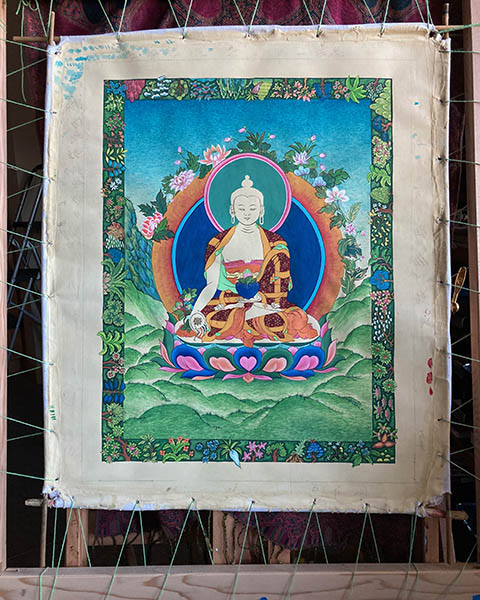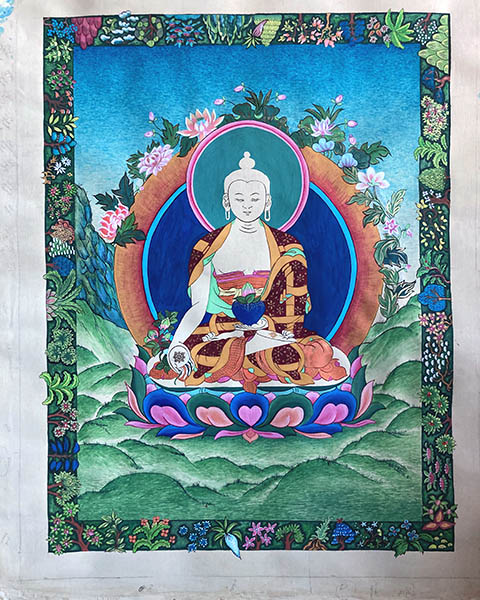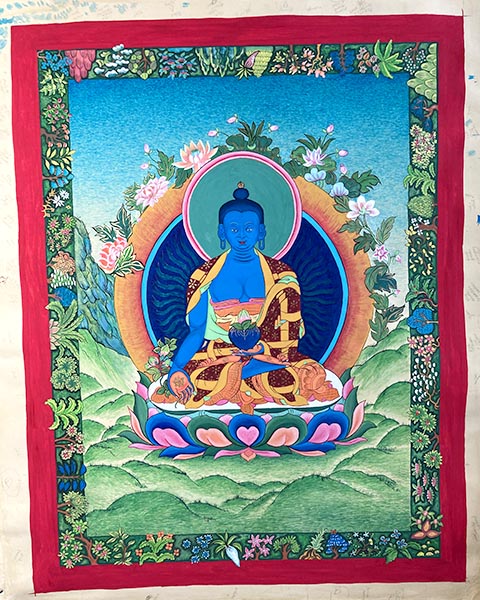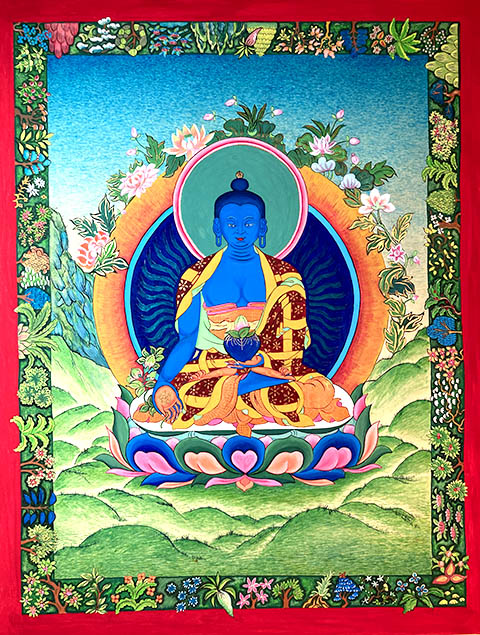Creating a Tibetan Thangka
Thangkas (pronounced “Tonka” – like the trucks) are Tibetan paintings developed to teach and visually describe various aspects of Buddhism. They were originally painted scrolls which could be rolled up and carried through the mountains by lamas to teach Buddhism to the Tibetan people. They show various deities – Buddhas and Taras, lamas and arhats, as well as symbolic depictions of Buddhist philosophy.
Earliest Thangkas are found dating from the 10th century, and because of the strict adherence to tradition, their structure and imagery remains mostly unchanged since that time. Traditional Thangka canvases are made from stretched cotton or other cloth, primed with a gesso-like substance, then polished and dried. The painting is done with water-based paint, as well as various inks.
Dry powdered pigment made from various mineral colors (lapis lazuli, malachite, etc) are ground with mortar and pestle and made into paint with animal glue and added in small strokes (no larger than a grain of rice). You can see the tiny strokes in the sky and water of the Padmasambhava and Medicine Buddha Thangkas.
Water based paints are added and outlined in ink. Finally real gold is applied, polished and detailed.
The last painting step of a Thangka is the painting of the syllables OM AH HUNG on the back of the canvas at the brow, throat and heart of the deity. Finally comes the consecration of the painting by a trained lama.

